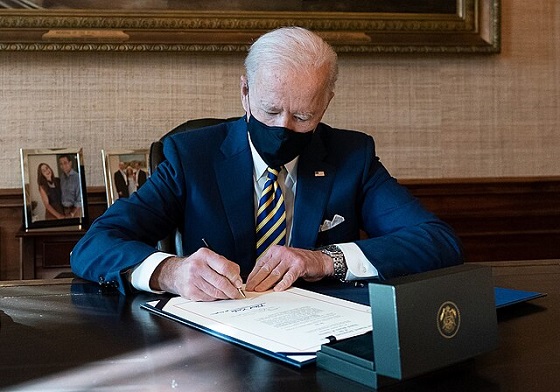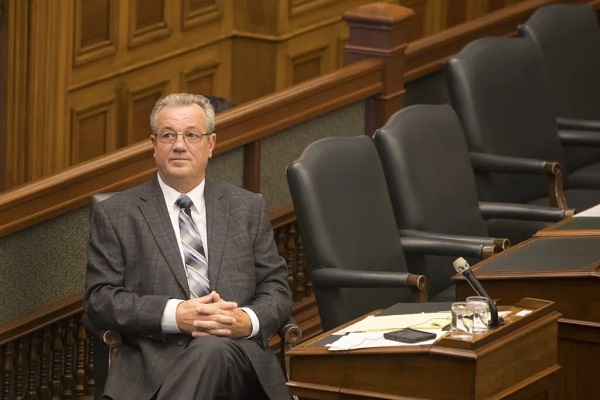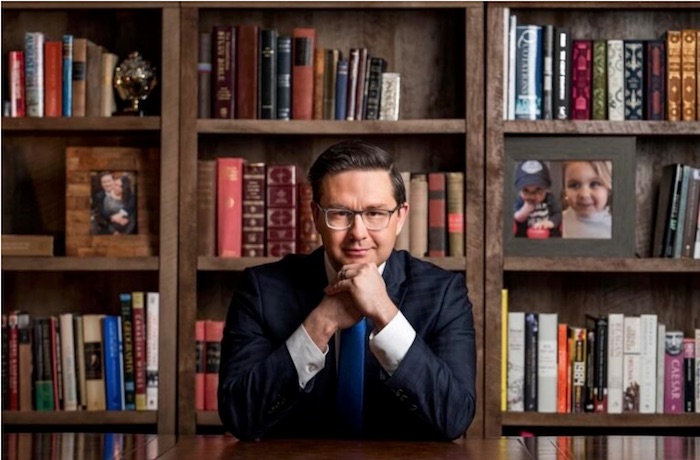COVID-19
Inquiry shows Canadian gov’t agencies have spent $10 million on social media ads for COVID jabs

From LifeSiteNews
One campaign cost $1.5 million alone to encourage children to receive the COVID-19 shots.
A recent Inquiry of Ministry request revealed that Canada’s Public Health Agency (PHAC) along with Health Canada have combined to spend approximately $9.9 million on social media advertising to promote the experimental COVID injections since 2020.
The Inquiry of Ministry information showing the large advertising spending on the COVID shots became known as the result of a request from Conservative Party of Canada MP Ted Falk, who demanded answers about what was being spent by officials to promote the shots.
The information published on April 8 shows that PHAC and Health Canada spent approximately $4.6 million on production costs of ads, with $5.3 million on actual advertising of the COVID shots on social media platforms Instagram, TikTok, Facebook, LinkedIn, Snapchat, and Pinterest from 2020 to 2024.
One mass COVID vaccination advertising campaign titled the “Ripple Effect” cost about $1.8 million alone. PHAC claimed the campaign served to “remind Canadians about the collective vaccination effort required to see a reduction in restrictions and public health measures.”
Other campaigns ranged in spending from $75,000 to $564,000 to promote the shots to young adults.
PHAC also spent $1.5 million on a campaign to promote the COVID shots to parents with kids to try and encourage them to get their kids injected.
It should be noted that PHAC, as per a 2021-22 Departmental Results Report, had tried “diligently to counter false statements and misinformation” to prop up the COVID shots. In 2023, PHAC was looking to hire social media influencers to promote the jab to Canadians who were opposed to taking the shots.
Health Canada previously was found to have spent some $132,000 on social media influencers to promote the COVID shots.
As reported by LifeSiteNews recently, the Trudeau government is still under contract to purchase multiple shipments of COVID shots while at the same time throwing away $1.5 billion worth of expired shots.
The continued purchase of COVID jabs comes despite the fact the government’s own data shows that most Canadians are flat-out refusing a COVID booster injection. It also comes as the government has had to increase spending on Canada’s Vaccine Injury Program (VISP), as reported by LifeSiteNews last week.
Canadians’ decision to refuse the shots also comes as a Statistic Canada report revealed that deaths from COVID-19 and “unspecified causes” rose after the release of the so-called “safe and effective” jabs.
LifeSiteNews has published an extensive amount of research on the dangers of receiving the experimental COVID mRNA jabs, which include heart damage and blood clots.
COVID-19
Biden Admin concealed report on earliest COVID cases from 2019

 MxM News
MxM News
Quick Hit:
A newly uncovered Defense Department report reveals that seven U.S. troops may have contracted COVID-19 during the 2019 World Military Games in Wuhan—months before the official pandemic timeline. The Biden administration kept the report from the public for over two years, despite a legal requirement to release it.
Key Details:
- A December 2022 Pentagon report shows seven U.S. service members showed COVID-like symptoms after attending the 2019 Wuhan games.
- The Biden administration withheld the report, which was required by law to be made public in 2022, until it was quietly posted online in March 2025.
- Evidence contradicts Biden officials’ 2021 claims and adds weight to theories that COVID-19 leaked from a Chinese lab before December 2019.
Diving Deeper:
The Biden administration withheld a critical Pentagon report for more than two years, one that sheds new light on the origins of the COVID-19 pandemic. According to documents obtained by the Washington Free Beacon, seven U.S. military service members may have contracted COVID-19 during or shortly after the 2019 World Military Games in Wuhan, China—a full two months before China officially acknowledged the outbreak.
The report, completed in December 2022, was mandated for public release by the National Defense Authorization Act. Yet, the administration only passed it to select Congressional committees and failed to make it publicly accessible as required. It wasn’t until March 2025 that the report quietly appeared on a Defense Department site under a section dedicated to “quality-of-life” issues—far from public view.
This revelation directly contradicts claims made by Biden administration officials in 2021, including then-Defense Department spokesman John Kirby, who stated there was “no knowledge” of any infections among the U.S. participants. The Trump administration had also denied early on that troops were tested or showed symptoms, citing the timing of the games before China’s outbreak announcement.
Held just miles from the Wuhan Institute of Virology—where controversial, U.S.-funded gain-of-function research was conducted—the 2019 games have long drawn suspicion from national security and public health experts. Prominent biologist Dr. Richard Ebright told the Free Beacon the report confirms that COVID was already circulating and likely leaked from the Wuhan lab: “This new information strengthens U.S. and allied intelligence data.”
Adding more context, athletes from European countries such as France, Germany, and Italy also reported flu-like symptoms in Wuhan, describing the city at the time as unusually empty—a “ghost town.” All seven American service members recovered quickly, and the Pentagon has not revealed when it first became aware of the cases.
Sen. Joni Ernst (R-Iowa) called the report’s concealment an “outrage,” noting it directly undermines the long-promoted narrative that COVID began at a Wuhan wet market in December 2019. “Taxpayers deserve to know the truth,” she said. “This report should have been made public immediately.”
Congressional Republicans have consistently asserted that the Wuhan games were among the first super spreader events of the pandemic. In 2021, House Foreign Affairs Republicans issued findings supporting that theory. Meanwhile, multiple federal agencies—including the CIA, FBI, and Energy Department—now publicly believe COVID most likely originated from the Wuhan Institute of Virology.
COVID-19
Randy Hillier wins appeal in Charter challenge to Covid lockdowns

Former Ontario Member of Provincial Parliament Randy Hillier in the Ontario Legislature (Photo credit: The Canadian Press/Chris Young)
The Justice Centre for Constitutional Freedoms is pleased that the Ontario Court of Appeal has accepted former Ontario MPP Randy Hillier’s appeal and overturned a lower court ruling that had dismissed his Charter challenge to Ontario’s lockdown regulations. These regulations were in effect during the 2021 Covid lockdowns.
The decision was released by the Ontario Court of Appeal on Monday, April 7, 2025.
In the spring of 2021, Mr. Hillier attended peaceful protests in Kemptville and Cornwall, Ontario. He spoke about the importance of the Canadian Charter of Rights and Freedoms and the harms caused by the province’s lockdown regulations. The government’s health orders made it illegal for even two people to assemble together outdoors: a blatant and unjustified restriction of the Charter section 2(c) freedom of peaceful assembly. Other provinces allowed five or ten or more people to gather together outdoors.
Mr. Hillier has outstanding charges in Kemptville, Cornwall, Peterborough, Belleville, and Smith Falls. Prosecutors in those jurisdictions are waiting to see the results of this Charter challenge. Mr. Hillier has faced similar charges in many other jurisdictions across Ontario, but these have been stayed or withdrawn at the request of the respective prosecutors.
Mr. Hillier defended himself against the tickets that were issued to him for violating lockdown restrictions by arguing that these lockdown regulations were unjustified violations of Charter section 2(c), which protects freedom of peaceful assembly.
Four expert reports were filed to support Mr. Hillier’s case, including the report of Dr. Kevin Bardosh, which extensively reviewed the many ways in which lockdowns harmed Canadians. They showed alarming mental health deterioration during the pandemic among Canadians, including psychological distress, insomnia, depression, fatigue, suicidal ideation, self-harm, anxiety disorders and deteriorating life satisfaction, caused in no small part by prolonged lockdowns. Many peer-reviewed studies show that mental health continued to decline in 2021 compared to 2020. The expert report also provides abundant data about other lockdown harms, including drug overdoses, a rise in obesity, unemployment, and the destruction of small businesses, which were prevented from competing with big-box stores.
Justice Joseph Callaghan dismissed that challenge in a ruling issued November 22, 2023. Notably, Justice Callaghan did not reference any evidence of lockdown harms that Dr. Bardosh had provided to the court. Without reasons, the court declared that Dr. Bardosh is “not a public health expert” and then ignored the abundant evidence of lockdown harms.
Lawyers for Mr. Hillier filed a Notice of Appeal with the Ontario Court of Appeal on December 22, 2023.
Mr. Hillier’s Appeal argued that, among other things, Justice Callaghan erred in applying the Oakes test. As the Notice of Appeal states, Justice Callaghan “fail[ed] to recognize that a complete ban on Charter protected activity is subject to a more onerous test for demonstrable justification at the minimal impairment and proportionality branches of Oakes.”
The Oakes test was developed by the Supreme Court of Canada in the 1986 case R. v. Oakes, as a way to evaluate if an infringement of a Charter right can be demonstrably justified in a free and democratic society. That test has three parts. The first requires that the means be rationally connected to the objective. The second is that it should cause minimal impairment to the right. The third is proportionality, in the sense that the objective of impairing the right must be sufficiently important.
Mr. Hillier’s Appeal focused on the second part of the Oakes test: whether the regulations were minimally impairing of Mr. Hillier’s 2(c) freedom where they effectively banned all peaceful protest.
Justice Centre President John Carpay stated, “It is refreshing to see a court do its job of protecting our Charter freedoms, by holding government to a high standard. There was no science behind Ontario’s total ban on all outdoor protests.”
-

 2025 Federal Election2 days ago
2025 Federal Election2 days agoWATCH: Massive Crowd for Historic Edmonton Poilievre Rally
-

 2025 Federal Election23 hours ago
2025 Federal Election23 hours agoConservative Party urges investigation into Carney plan to spend $1 billion on heat pumps
-

 2025 Federal Election2 days ago
2025 Federal Election2 days agoHarper Endorses Poilievre at Historic Edmonton Rally: “This Crisis Was Made in Canada”
-

 2025 Federal Election2 days ago
2025 Federal Election2 days agoAn In-Depth Campaign Trail “Interview” With Pierre Poilievre
-

 Business2 days ago
Business2 days agoTrump’s tariff plan replaces free trade with balanced trade. Globalists hate that.
-

 2025 Federal Election23 hours ago
2025 Federal Election23 hours agoFifty Shades of Mark Carney
-

 2025 Federal Election2 days ago
2025 Federal Election2 days agoDon’t double-down on net zero again
-

 2025 Federal Election23 hours ago
2025 Federal Election23 hours agoCorporate Media Isn’t Reporting on Foreign Interference—It’s Covering for It





